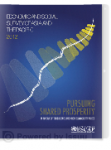According to the report, Pacific Small Island Developing States are forecast to experience lower aggregate growth in 2012, but most individual PSIDS are likely to maintain stable growth.
Continued dynamism in the region, the Survey notes, means that the Asia-Pacific has begun to act as a "growth pole" for other developing regions, helping them to reduce dependence on low-growth developed economies as South-South trade becomes increasingly important.
 10 May 2012: The UN Economic and Social Commission for Asia and the Pacific (ESCAP) has launched the Economic and Social Survey of Asia and the Pacific 2012. The Survey, titled “Pursuing Shared Prosperity: In an Era of Turbulence and High Commodity Prices,” outlines some of the pressing challenges facing the region and provides elements of a policy agenda for Asia-Pacific countries to achieve more resilient, inclusive and sustainable development.
10 May 2012: The UN Economic and Social Commission for Asia and the Pacific (ESCAP) has launched the Economic and Social Survey of Asia and the Pacific 2012. The Survey, titled “Pursuing Shared Prosperity: In an Era of Turbulence and High Commodity Prices,” outlines some of the pressing challenges facing the region and provides elements of a policy agenda for Asia-Pacific countries to achieve more resilient, inclusive and sustainable development.
According to the Survey, launched in Bangkok, Thailand, and other cities around the world on 10 May 2012, the growth rate of Asia-Pacific developing economies declined to 7.0% in 2012, from 8.9% in 2010, and is predicted to decline further to 6.5% in 2012, due to decreased demand for the region’s exports in advanced economies and as a result of higher costs of capital.
The Survey also notes that Pacific small island developing States (PSIDS) are forecast to experience lower aggregate growth in 2012 of 5.7%, due to lower growth rates in Papua New Guinea (PNG), although other Pacific SIDS are likely to maintain stable growth. Inflation in Asia and the Pacific is forecast to moderate from 6.0% to 4.8%.
The Survey predicts that despite the slowdown the region is set to remain the fastest growing region globally. Its “growth engines,” namely China and India, are projected to continue to grow at robust rates throughout 2012. Continued dynamism in the region, the Survey notes, means that the Asia-Pacific has begun to act as a “growth pole” for other developing regions, namely Latin America and Africa, helping them to reduce their dependence on low-growth developed economies as South-South trade becomes increasingly important. [Publication: Economic and Social Survey of Asia and the Pacific 2012] [Webcast of Survey Launch at UN Headquarters] [UNESCAP Press Release] [Executive Summary]